How to Store Bok Choy for Lasting Deliciousness
Author: Anne Cowart | Editor: Omar Alonso
Review & Research: Jen Worst & Chris Miller
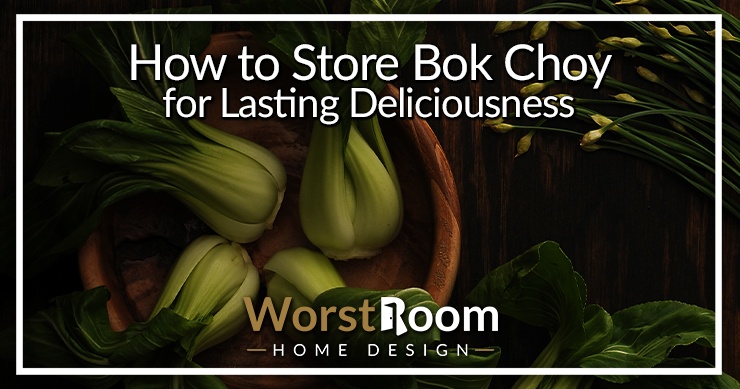
So, you need to know how to store bok choy properly to enjoy it for multiple days or even months down the line. Luckily, there are not only one but multiple ways to store it based on your time-frame needs.
Thanks to its numerous health benefits, bok choy is a pretty popular vegetable all over the world. Almost every part is edible, from thick green leaves to the white stalk. However, just like any other leafy vegetable, this one remains fresh only for a day or two.
Sometimes a simple aluminum foil or Ziploc bag does the trick. You can also freeze them or make pickles to keep the greens fresh and crisp for longer periods. To help you in the process, we will discuss all the ways of perfectly storing bok choy without losing its taste and nutritional value.
So without wasting much time, let's dive right in.
5 Easy Methods for Storing Bok Choy
As mentioned, there are several easy methods of storing this vegetable without losing its crispiness. You can either refrigerate it for short-term storage or freeze the vegetable for longer uses.
Here are some easiest methods to preserve bok choy that you can follow, step-by-step so you can always have some on hand, whether you have a special dish to cook later, or you end up needing a broccoli substitute, or just because you love it so much.
1) Refrigerate for Short Time Storage
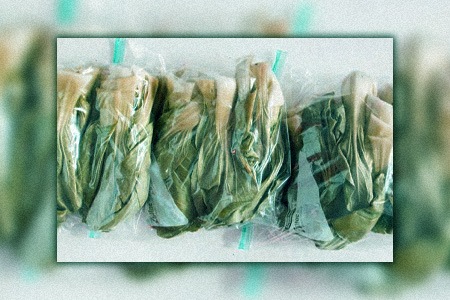
Of course, we are starting with the most common way of storing any vegetable. At room temperature, the leaves start to wilt just after two hours. On the other hand, keeping them in the refrigerator will keep them fresh for 3 to 4 days.
This is how to keep bok choy fresh if you plan on using it very soon. Again, there are multiple ways you can follow to refrigerate the vegetable. This includes…
Using Ziploc Bag
Step 1: Avoid washing the vegetable if you want to cook them within a few days. The green bok choy leaves are already full of moisture, and adding extra water will mold the leaves soon. Start the process by separating the pale, half-rotten, and yellow leaves.
Step 2: Take a Ziploc bag and make small holes to ensure proper air circulation. This will prevent wilting of the leaves. If needed, you can cut the vegetable into smaller pieces to directly use them in your salad or soup. Apart from a Ziploc, perforated plastic bags will also do the job.
Step 3: Finally, seal the Ziploc bag and remove all the extra air. Then refrigerate it in the crisper drawer for up to 4 days. Don't put heavy things over the bags as it will promote rotting.
Wrapping in Aluminum Foil
Step 1: First, shake off all the leaf dirt and debris. Again, no need to wash them. Cut off the leaves and stalks to store them separately.
Step 2: Use a large aluminum foil to cover the parts fully. Fold them up or make multiple layers if needed. Just make sure the leaves and stalks aren't too tightly placed. Fold the aluminum foil properly from top to bottom and side to side. Don't use plastic wrap, but if you don't have aluminum foil you can look at some of the plastic wrap alternatives you may have around the kitchen.
Step 3: Place the foil into a freezer or regular plastic bag when all the vegetables are completely covered. Avoid completely sealing the bag, as you must leave some space for airflow. Finally, put the bag into your refrigerator, and your job is done. The nice thing is once you defrost it you can put the aluminum foil directly in the oven to cook your bok choy.
Storing in Water
Step 1: You'll need a plastic or glass jar for this one. Fill it with cold water and place only the stalks in the water.
Step 2: Make sure the stalks are placed vertically and the leaves are away from the water. After that, place the jar inside your refrigerator. This way, the bok choy will prevent rotting and molding for up to 2 days.
2) Put Into Freezer for Long-Term Storage
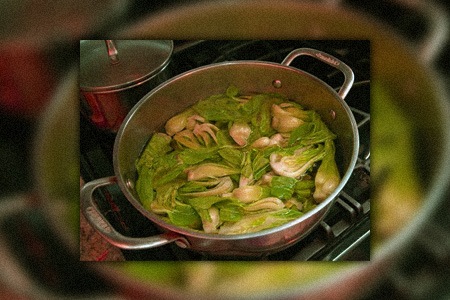
If you want to know how to store bok choy for months on end, freezing it will be a better choice. You can freeze the blanched, cooked, or raw vegetable as you wish. It will maintain its shape and quality in the freezer for 12 months.
Now, you have two options: freezing after blanching the vegetable and freezing without blanching. No matter which option you choose, our methods will help you to keep the leaves and stalks fresh and crispy.
Freezing After Blanching
Step 1: Washing the bok choy is a must before freezing. If you're lucky, shaking and rinsing with water will clear off all the dirt. However, in most cases, the dirt stays even after thorough washing.
So, you need to cut the stalk and use a soft brush to clean the area completely. When you're done, dry the leaves and remove excess moisture.
Step 2: You need to pick only the fresh and tender bok choy for freezing. Separate the yellow leaves and bruised stalks. Now, use a sharp knife to cut the stems. Trim off the leaves into smaller pieces for easier storage.
Step 3: Take a pot and boil some water to medium heat. Put the bok choy into the water and keep boiling for 2 minutes. Stop immediately when the leaves turn bright green.
Take the vegetable out of the pot and quickly submerge it in cold water. Ensure that you waste no time cause if you fail to dip bok choy in cold water immediately, it will lose its shape.
Step 4: Use a paper towel to dry the leaves completely. You can flash freeze the bok choy by covering it in baking paper and putting it in the freezer for 20 minutes.
Or, you can directly place it in an airtight freezer bag and store it in the coldest part of the freezer. We've had people ask how to store baby bok choy, and rest assured, the methods described here are the same for that.
Freezing Without Blanching
Step 1: While some prefer blanching beforehand, many think it causes enzyme reactions allowing the leaves to wilt faster. So, to freeze bok choy, you can avoid the blanching process.
First, slice off the stems from the leaves and thoroughly clean them using a paper towel. It's better to use a dry towel or vegetable brush. However, you can also use a damp one.
Step 2: Separate the stalks and leaves. Cut the vegetable into small pieces. Drain any remaining water and dry the vegetable.
Step 3: Put the stalks and leaves in a freezer bag. Remove any excess air from the bag and seal it. Place the bag in your freezer, and you'll be able to cook it fresh for up to a year.
So, the question is "can you freeze bok choy?" and the answer is a resounding yes. In fact, it will last much longer for you that way so you won't be in a rush to use it up.
3) Pressure Canning Bok Choy
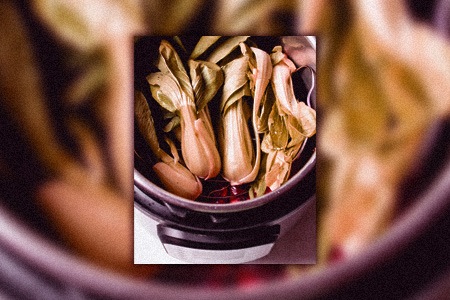
Pressure canning bok choy requires proper heating of the jar to increase the pressure in it high enough to kill off any germs, and sealing it airtight. Pressure-canned bok choy remains edible for a year or more. However, this process might ruin the color and texture of the vegetable. Here's how to store bok choy by pressure cooking cans of it…
Step 1: Before anything else, properly clean the bok choy and remove all the dirt. Then put it into boiling water for 2 minutes only. Quickly take it out and cool it in ice-cold water for another couple of minutes.
Step 2: Drain and dry the boiled vegetable and use canning jars to store them. Fill the larger part of the jar with bok choy and use boiled water for the remaining. Leave about an inch of space between the water and can lid.
Step 3: Next, you need to process the vegetable jar in a canner. You need to process your one-pint jar at 11-pound pressure for at least 70 minutes.
Using dial-gauge canners is helpful in this case. When it's done, take out the canned jars and place them in a dry place for long-term storage.
4) Turning Bok Choy into Pickle
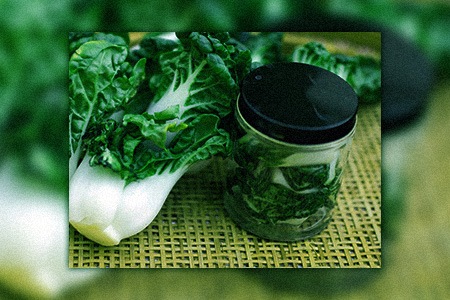
Yes, you can turn bok choy into tasty types of pickles to store it for months. In this process, you can add extra flavors to the raw vegetable. Therefore, it's instantly ready for eating whenever you want.
Like any other pickling process, this one also requires a lot of ingredients. To pickle bok choy, follow the step-by-step method given below.
Step 1: Cut off the vegetable base and separate the leaves from the stalks. Clean the bok choy with a vegetable brush or use water for proper cleaning. Next, you have to prepare the pickle jar by sterilizing it.
Place the jar in boiling water for at least 10 minutes to kill the most harmful germs—no need to take it out after boiling. Keep the jar inside so that it stays warm.
Step 2: Now it's time for the pickle brine. Take one pound of bok choy and add half a cup of vinegar, salt, water, and sugar. Take up to 3 minutes to simmer this brine and pour it into the sterilized jars containing boiled bok choy.
Step 3: Add your preferred spices, herbs, and other ingredients if you want. Let the mixture cool down before storing it in your refrigerator. It's better to consume the pickled bok choy within six months.
5) Dehydrating Bok Choy
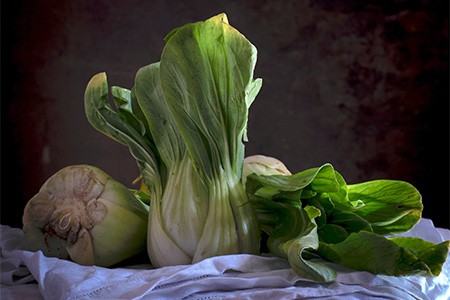
Any fruit or vegetable, and bok choy is no different, will last way longer after being dehydrated. No matter which method you use below, you'll first want to start by trimming off the end so you can rinse it out.
You'll then boil it for just a few minutes and immediately drop the box choy into an ice bath. Let it drain out in a colander, shake it out, and/or pat it dry with a clean paper towel. Now you have clean, prepared, and dry bok choy ready to be dehydrated using one of the methods below.
Dehydrator Method: The obvious way to do this is to use a food dehydrator if you have one. They simply blow hot air through a container that holds your vegetables until all the moisture has been extracted and evaporated out of them.
The downside is that a dehydrator can take quite some time to complete their jobs. Expect to wait anywhere between 8 and 12 hours with the standard setting, which is around 140 degrees Fahrenheit. You'll know they're done because the leaves will be crunchy, even brittle, and the stalks will be very firm and not flexible by much.
Oven Method: Most everyone has an oven in their home, so no extra or new tools will be needed for this method. What you'll do is spread your prepared bok choy on a baking sheet and slide it into the oven. Turn your oven onto the lowest heat setting possible, because you're not looking to cook the vegetables, only evaporate out the moisture.
If you thought waiting about 10 hours for a dehydrator was bad, you'll find that you'll be waiting nearly as long using an oven because an oven can't cycle air and push it around to help aid evaporation like a dehydrator can. You can shorten the time to 6 to 8 hours by turning up the heat a little, but please don't overdo it. You'll have to have patience regardless.
How to Store Bok Choy for Long-Term Enjoyment
If you want to keep the vegetable fresh for only a few days, use a Ziploc bag and avoid washing it before putting it into your refrigerator. To keep bok choy crispy for months, keep it in a freezer following our detailed methods.
That was all about how to store bok choy for both long and short time use. We included the most effective ways so that anyone can store the vegetable with minimal effort and ingredients.




